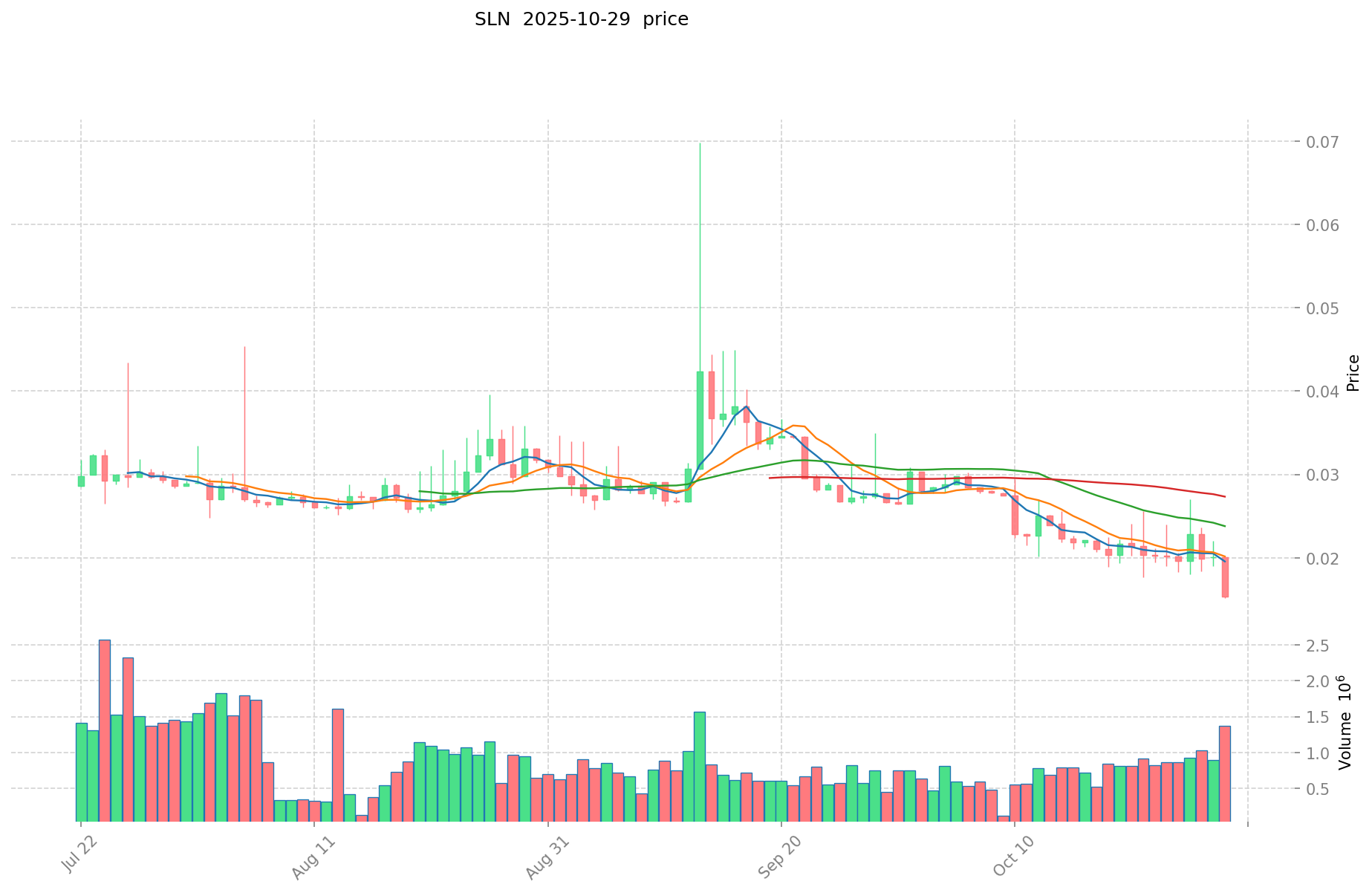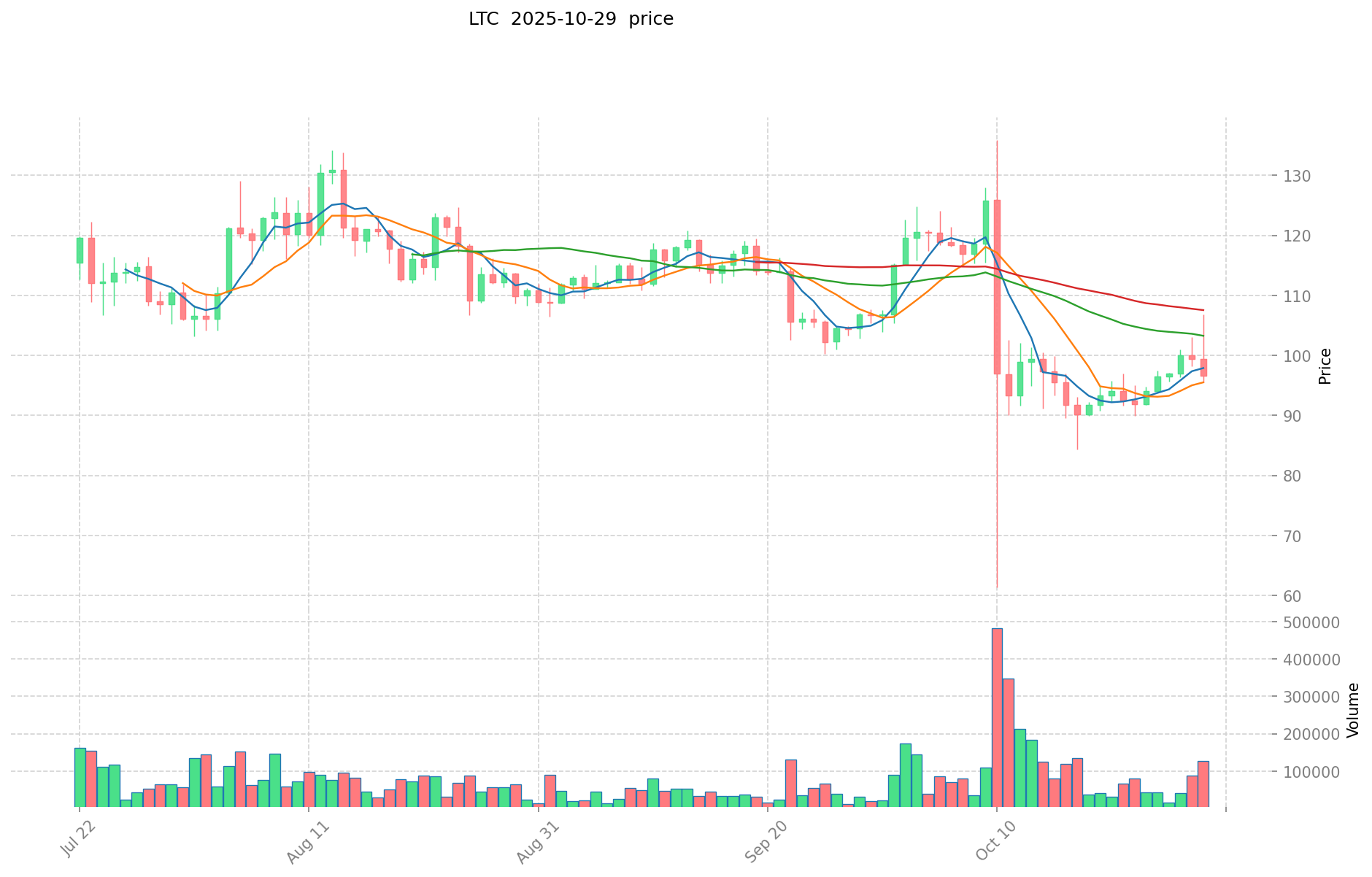SLN vs LTC: A Comparative Analysis of Two Promising Cryptocurrency Projects
Introduction: Investment Comparison of SLN vs LTC
In the cryptocurrency market, the comparison between Smart Layer Network Token (SLN) and Litecoin (LTC) has been an unavoidable topic for investors. The two not only differ significantly in market cap ranking, application scenarios, and price performance but also represent different positioning in the crypto asset space.
Smart Layer Network Token (SLN): Launched in 2024, it has gained market recognition for its innovative token standard and digital asset paradigm.
Litecoin (LTC): Since its inception in 2011, it has been hailed as the "silver to Bitcoin's gold" and is one of the cryptocurrencies with the highest global trading volume and market capitalization.
This article will comprehensively analyze the investment value comparison between SLN and LTC, focusing on historical price trends, supply mechanisms, institutional adoption, technological ecosystems, and future predictions, attempting to answer the question most concerning investors:
"Which is the better buy right now?"
I. Price History Comparison and Current Market Status
SLN and LTC Historical Price Trends
- 2024: SLN launched with its innovative token standard ERC-5169, reaching an all-time high of $12.3999.
- 2021: LTC price surged to its all-time high of $410.26 amid the broader crypto market bull run.
- Comparative analysis: Since their respective peaks, SLN has declined to $0.01458, while LTC has shown more resilience, currently trading at $96.45.
Current Market Situation (2025-10-29)
- SLN current price: $0.01458
- LTC current price: $96.45
- 24-hour trading volume: SLN $27,013.33 vs LTC $13,173,402.25
- Market sentiment index (Fear & Greed Index): 51 (Neutral)
Click to view real-time prices:
- Check SLN current price Market Price
- Check LTC current price Market Price


II. Core Factors Affecting SLN vs LTC Investment Value
Supply Mechanism Comparison (Tokenomics)
- SLN: Limited information available about specific supply mechanism
- LTC: Follows a halving mechanism similar to Bitcoin, with a maximum supply cap
- 📌 Historical Pattern: Supply mechanisms typically drive cyclical price movements in cryptocurrency markets, with halving events often preceding bull runs.
Institutional Adoption and Market Applications
- Institutional Holdings: Limited data available on institutional preference between SLN and LTC
- Enterprise Adoption: Both cryptocurrencies seek integration into cross-border payments and settlement systems
- Regulatory Attitudes: Regulatory environments vary by country, with increasing scrutiny on all cryptocurrencies globally
Technical Development and Ecosystem Building
- Technical Strength: Strong technical capabilities and capital resources attract investor attention to both assets
- Market Dynamics: Token unlocking events and supply adjustments (like token burning) can significantly impact market valuation
- Technology Evolution: Web3 development continues to shape the importance and utility of blockchain projects
Macroeconomic Factors and Market Cycles
- Correlation with Traditional Markets: Documented correlation between stock market performance and cryptocurrency values
- Investor Sentiment: During tech stock downturns, investor sentiment often shifts toward alternative assets including cryptocurrencies
- Market Trends: Web3 technological development continues to influence valuation of blockchain infrastructure projects III. 2025-2030 Price Prediction: SLN vs LTC
Short-term Prediction (2025)
- SLN: Conservative $0.0133-$0.0143 | Optimistic $0.0143-$0.0202
- LTC: Conservative $50.23-$96.60 | Optimistic $96.60-$116.88
Mid-term Prediction (2027)
- SLN may enter a growth phase, with prices expected in the range of $0.0137-$0.0291
- LTC may enter a steady growth phase, with prices expected in the range of $72.96-$128.55
- Key drivers: Institutional capital inflow, ETF, ecosystem development
Long-term Prediction (2030)
- SLN: Base scenario $0.0185-$0.0308 | Optimistic scenario $0.0308-$0.0348
- LTC: Base scenario $133.72-$167.15 | Optimistic scenario $167.15-$247.38
Disclaimer: This analysis is based on historical data and market projections. Cryptocurrency markets are highly volatile and unpredictable. This information should not be considered as financial advice. Always conduct your own research before making investment decisions.
SLN:
| 年份 | 预测最高价 | 预测平均价格 | 预测最低价 | 涨跌幅 |
|---|---|---|---|---|
| 2025 | 0.0202476 | 0.01436 | 0.0133548 | -1 |
| 2026 | 0.023187092 | 0.0173038 | 0.015919496 | 18 |
| 2027 | 0.02915344224 | 0.020245446 | 0.01376690328 | 38 |
| 2028 | 0.0340852328856 | 0.02469944412 | 0.0130907053836 | 69 |
| 2029 | 0.03233157235308 | 0.0293923385028 | 0.025865257882464 | 101 |
| 2030 | 0.034874009633572 | 0.03086195542794 | 0.018517173256764 | 111 |
LTC:
| 年份 | 预测最高价 | 预测平均价格 | 预测最低价 | 涨跌幅 |
|---|---|---|---|---|
| 2025 | 116.886 | 96.6 | 50.232 | 0 |
| 2026 | 124.88931 | 106.743 | 99.27099 | 10 |
| 2027 | 128.55593205 | 115.816155 | 72.96417765 | 20 |
| 2028 | 171.060460935 | 122.186043525 | 96.52697438475 | 26 |
| 2029 | 187.6777628544 | 146.62325223 | 99.7038115164 | 52 |
| 2030 | 247.382751162456 | 167.1505075422 | 133.72040603376 | 73 |
IV. Investment Strategy Comparison: SLN vs LTC
Long-term vs Short-term Investment Strategies
- SLN: Suitable for investors focused on innovative token standards and ecosystem potential
- LTC: Suitable for investors seeking stability and established market presence
Risk Management and Asset Allocation
- Conservative investors: SLN: 10% vs LTC: 90%
- Aggressive investors: SLN: 30% vs LTC: 70%
- Hedging tools: Stablecoin allocation, options, cross-currency portfolios
V. Potential Risk Comparison
Market Risks
- SLN: High volatility due to newer market entry and lower liquidity
- LTC: Susceptible to broader cryptocurrency market trends
Technical Risks
- SLN: Scalability, network stability
- LTC: Mining centralization, potential security vulnerabilities
Regulatory Risks
- Global regulatory policies may have differing impacts on both assets
VI. Conclusion: Which Is the Better Buy?
📌 Investment Value Summary:
- SLN advantages: Innovative token standard, potential for ecosystem growth
- LTC advantages: Established market presence, higher liquidity, proven track record
✅ Investment Advice:
- New investors: Consider a higher allocation to LTC for stability
- Experienced investors: Balanced portfolio with both SLN and LTC
- Institutional investors: Assess SLN's long-term potential while maintaining LTC exposure
⚠️ Risk Warning: The cryptocurrency market is highly volatile. This article does not constitute investment advice. None
VII. FAQ
Q1: What are the main differences between SLN and LTC? A: SLN is a newer cryptocurrency launched in 2024 with an innovative token standard, while LTC has been around since 2011 and is known as "silver to Bitcoin's gold". SLN has a lower market cap and trading volume, while LTC is more established with higher liquidity.
Q2: Which cryptocurrency has shown better price performance recently? A: Based on the provided data, LTC has shown more price resilience. As of October 29, 2025, LTC is trading at $96.45, while SLN has declined to $0.01458 from its all-time high.
Q3: How do the supply mechanisms of SLN and LTC compare? A: Limited information is available about SLN's specific supply mechanism. LTC follows a halving mechanism similar to Bitcoin and has a maximum supply cap. These mechanisms can influence price movements in the cryptocurrency market.
Q4: What are the projected price ranges for SLN and LTC in 2030? A: For SLN, the base scenario projects $0.0185-$0.0308, with an optimistic scenario of $0.0308-$0.0348. For LTC, the base scenario projects $133.72-$167.15, with an optimistic scenario of $167.15-$247.38.
Q5: How should investors allocate their portfolio between SLN and LTC? A: Conservative investors might consider allocating 10% to SLN and 90% to LTC, while more aggressive investors could allocate 30% to SLN and 70% to LTC. However, individual risk tolerance and investment goals should guide allocation decisions.
Q6: What are the main risks associated with investing in SLN and LTC? A: Both face market risks related to cryptocurrency volatility. SLN has higher volatility due to its newer market entry and lower liquidity. Technical risks include scalability for SLN and mining centralization for LTC. Both are subject to evolving regulatory risks globally.
Share
Content